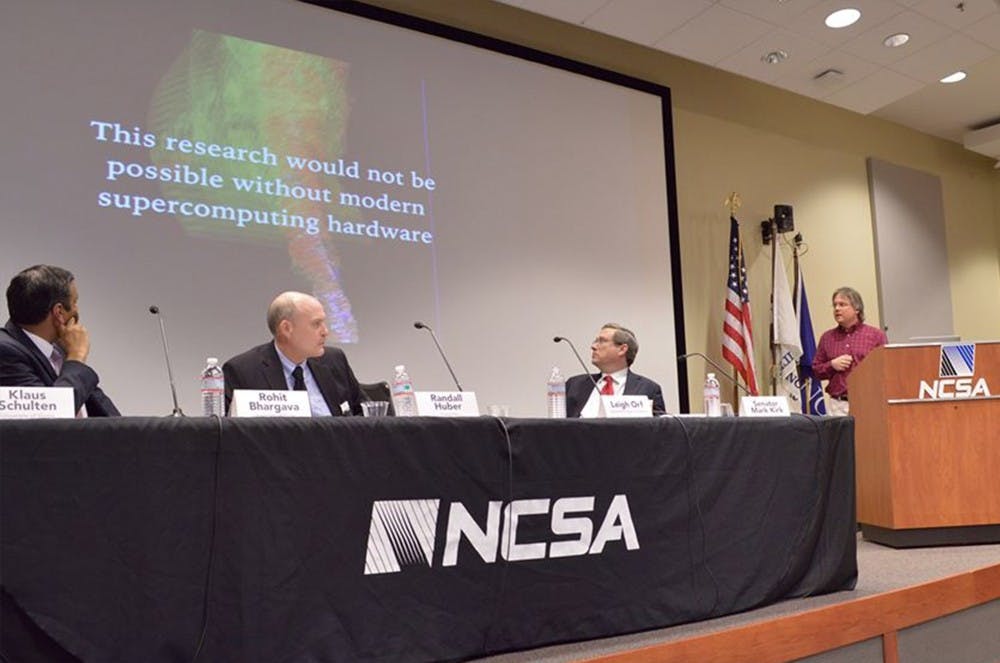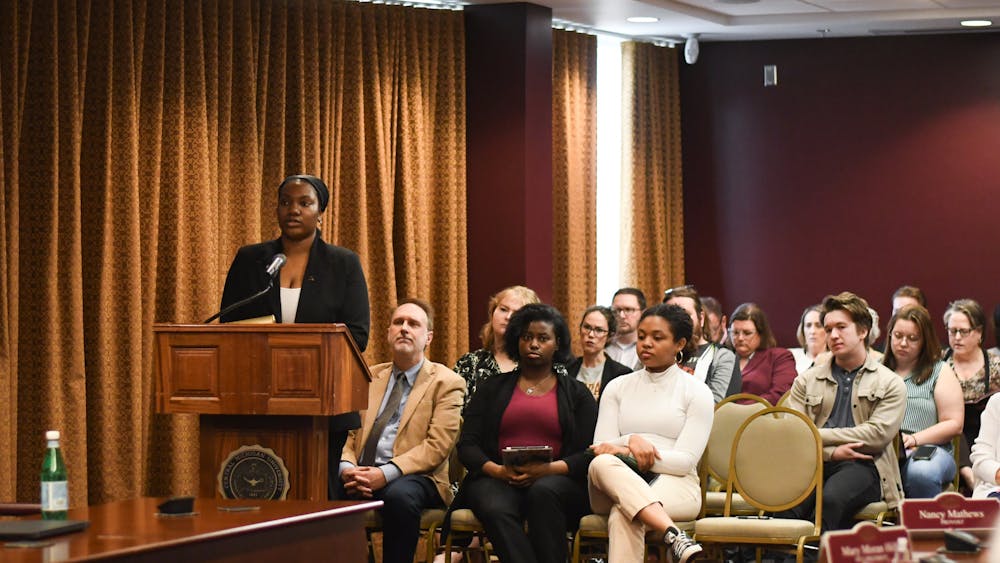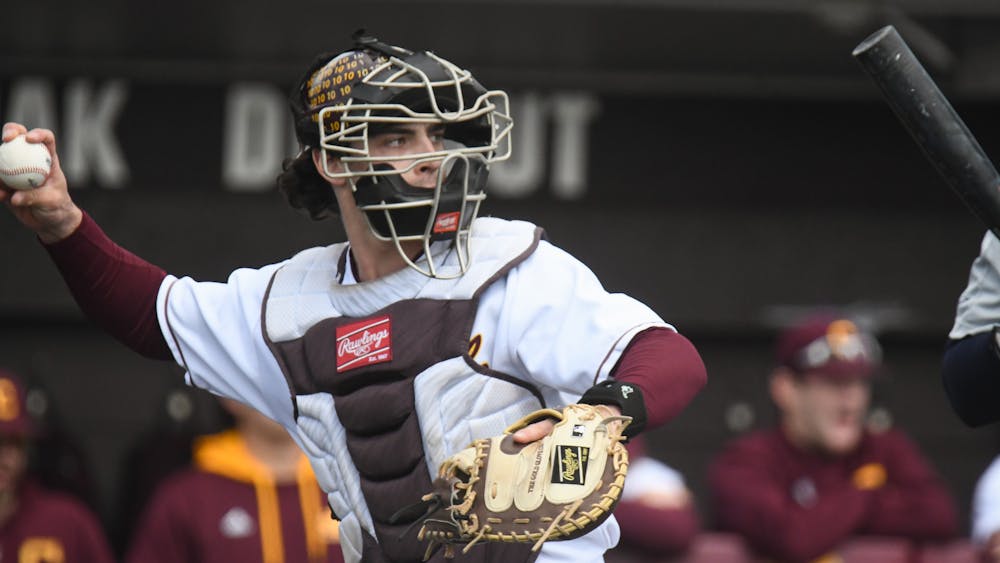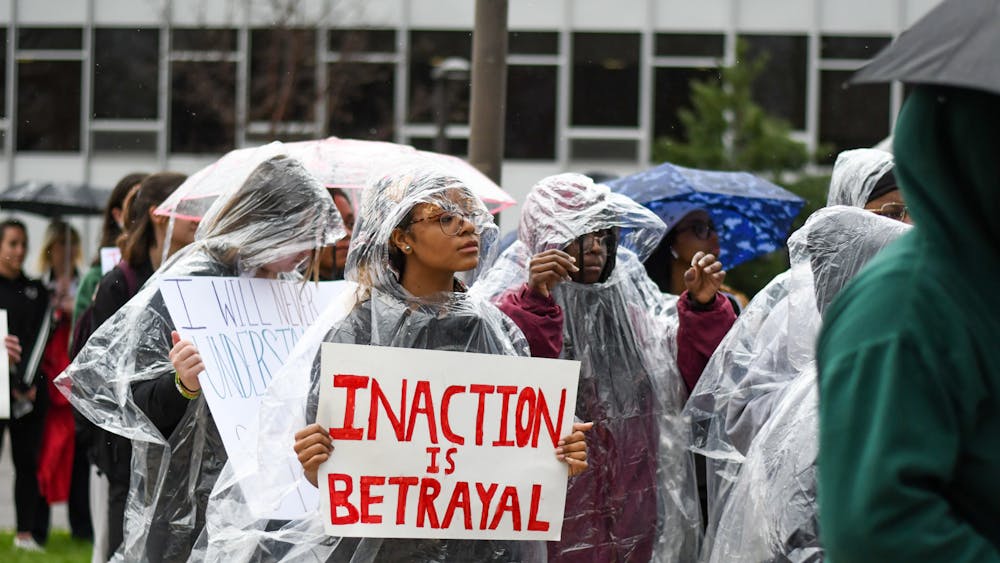More than just a major

Photo Courtesy of University Communications | Professor Leigh Orf was one of four researchers nationwide invited to speak at the National Center for Supercomputing Applications conference celebrating the second birthday of its Blue Waters supercomputer. Orf is one of the many professors within the Department of Earth and Atmospheric Sciences.
As a child, Standish senior Cody Whitman used to find colorful rocks and interesting things when he went on adventures.
This first sparked his interest in the world of geology and after taking an introductory course for a teaching major, Whitman realized he could make a career out of it.
The Department of Earth and Atmospheric Sciences at Central Michigan University provides majors in Geology, Meteorology and Hydrogeology. Students involved in these majors are able to obtain hands on experience in the field and in a laboratory setting.
“Almost all classes within the department involve lab activities,” said Chairperson of the Department of Earth and Atmospheric Science Martin Baxter. “The meteorology students look at weather going on around the world and apply it to the curriculum. The geology students analyze mineral composition they find in the field. There’s always a teachable moment in this department.”
With these majors students are able to do a number of things after graduation. Geology majors go towards three tracks after graduation including graduate school, working with petroleum and monitoring the environment. Meteorology students usually get a career in weather forecasting or work for television broadcasting.
“I’m currently leaning towards working with something related to petroleum,” Whitman said. “But I really have had a joy doing surveying especially in my intro to geologic investigation class.”
Geological surveying is when field maps are made to figure out where certain minerals and nutrients are in the ground. People with this career usually work for the government, state or county.
Students interested in these fields can work with faculty members in undergraduate research laboratories and apply for programs across the country. Recently, four students gave poster presentations at the National Weather Service Great Lakes sector.
“I think that there is an increased interest in these majors,” Baxter said. “Climate change and sustainability are big topics right now and students are interested in helping use the world’s resources better.”
According to a survey done by Geology Professor Mona Sirbescu and others in the department, the placement rate for geology students after graduation is 95 percent and 70 percent for meteorology.
“It’s a CMU tradition to get undergraduate students involved in their majors through research,” Sirbescu said. “These students need a lot of hands on experience to be in the professional world. Field work and analytical work is important to both the faculty and students.”
Students within the department have been able to be co-authors of scientific publications for geology and meteorology, as well as receive awards at national conferences.
“Being a geology major is a lot of fun,” Whitman said. “Our department is smaller so it’s easy to be on a first name basis with all the professors. It’s nice to know that the students and professors will be there for me, even if it’s not class related.”




